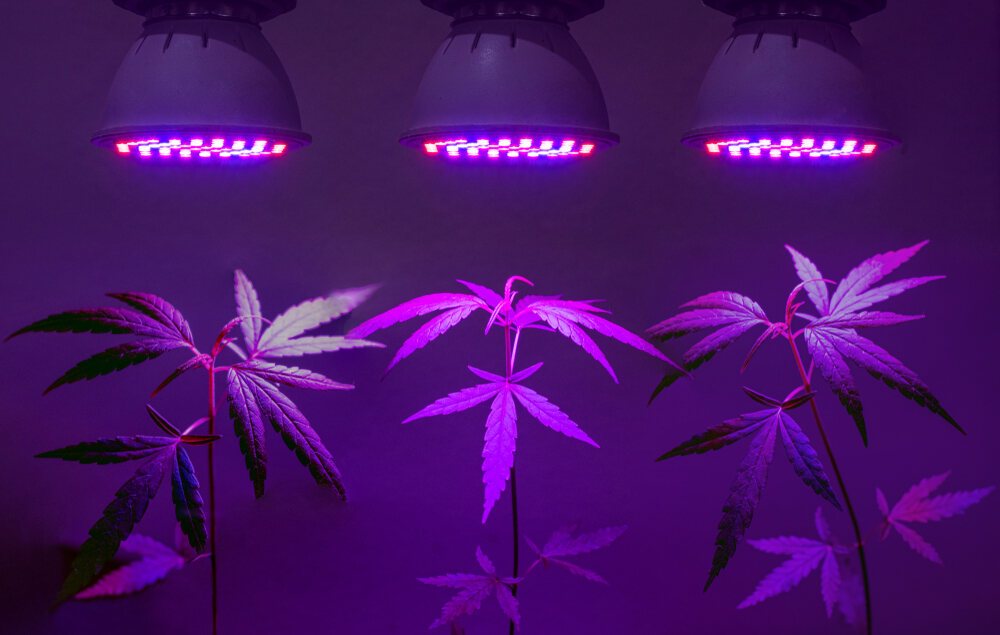The Best Fluffy Pancakes recipe you will fall in love with. Full of tips and tricks to help you make the best pancakes.

Best Light Schedules for Growing Cannabis
When it comes to growing cannabis, the right light schedule can make all the difference. Light affects everything from the plant’s growth cycle to the quality and quantity of the final yield. In this guide, we’ll walk you through the best light schedules for cannabis growing, whether you’re just starting out or looking to up your cultivation game.
Understanding Light Cycles for Cannabis Growth
What is a Light Cycle in Cannabis Cultivation?
A light cycle is simply the amount of time your cannabis plants are exposed to light versus darkness. Just like humans, marijuana plants have an internal clock (the circadian rhythm) that determines their growth patterns. This clock is set by the light cycle, which affects how the plant grows and when it starts producing buds. In indoor weed growing, you control this cycle using artificial lights, while outdoor growing relies on the natural sun.
Why Light Schedules Are Important for Different Growth Stages
The light schedule is super important because cannabis plants have different needs during their life stages. During the vegetative stage, they need long hours of light to develop strong stems and lots of foliage. When it’s time to flower, reducing the light triggers the plant to start producing buds. It’s kind of like flipping a switch that says, “Time to get fruity!”
Natural vs. Artificial Light in Indoor and Outdoor Grows
Growing indoors means you get to control the entire light schedule using grow lights like LEDs or HIDs. This can be a big advantage, especially if you’re in an area with unpredictable weather. Outdoor growing, however, relies on the natural sun cycle, so you have to plan around seasonal changes. The upside? Sunlight is free, and it provides a full light spectrum that can be tough to replicate indoors.
Cannabis Growth Stages and Optimal Light Schedules
Seedling Stage: Light Requirements and Schedule
During the seedling stage, your baby marijuana plants need about 18-24 hours of light daily. They’re just starting out, so keep the lights gentle and not too intense. Low-wattage LEDs or fluorescents work well here. Think of it like giving a baby a warm, comfy blanket—not too much, not too little.
Vegetative Stage: Best Light Schedule for Optimal Growth
When your plants move into the vegetative stage, they’re ready for a full 18/6 light schedule (18 hours of light and 6 hours of darkness). This long light exposure helps the plants grow big and bushy, setting them up for a hefty yield. Keep the lights bright but not scorching—LEDs or high-intensity discharge (HID) lamps are a good choice.
Flowering Stage: Adjusting Light to Trigger Bud Production
The flowering stage is where the magic happens! To trigger flowering, switch your light schedule to 12/12 (12 hours of light and 12 hours of darkness). This signals to the plant that it’s time to start producing buds. Make sure your dark periods are completely uninterrupted, as even a tiny light leak can mess with bud production.
The Importance of Light Spectrum During Each Growth Stage
Not just any light will do. During the vegetative stage, marijuana plants prefer a blue light spectrum, which helps with leaf and stem growth. When flowering, they shift to loving a red light spectrum that encourages bud production. Most grow lights come with settings to switch between blue and red spectrums to keep your plants happy.
Best Light Schedules for Different Cannabis Varieties
Light Schedules for Autoflowering Cannabis Plants
Autoflowers are the rebels of the cannabis world—they don’t rely on light schedules to flower. Instead, they bloom based on age. For best results, give autoflowering plants 18-24 hours of light throughout their life cycle. More light equals more energy, which means bigger buds!
Light Schedules for Photoperiod Cannabis Strains
Photoperiod strains are classic cannabis plants that need a change in light schedule to trigger flowering. Start with an 18/6 schedule for the vegetative stage, then switch to 12/12 when you’re ready for them to flower. The flexibility to control the light cycle makes photoperiods popular among growers aiming for high yields.
Adjusting Light Schedules for Different Strains and Desired Outcomes
Different strains have different preferences. Indicas might thrive with shorter vegetative periods, while sativas often need longer veg times to reach their full potential. Experimenting with light schedules, like using a 20/4 cycle during veg for faster growth, can help you achieve the outcomes you want.
Implementing Light Schedules for Indoor Cannabis Growing
Choosing the Right Grow Lights: LED, HID, and Fluorescent
Your light schedule is only as good as the lights you use. LEDs are energy-efficient and have customizable spectrums, making them a top choice. HIDs (High-Intensity Discharge) offer strong light output but can run hot. Fluorescents are great for seedlings and small grow spaces. Pick what suits your setup best.
Setting Up a Timer for Consistent Light Cycles
Timers are your best friend when it comes to maintaining consistent light cycles. Invest in a reliable timer and set it up to automatically switch your lights on and off according to your desired schedule. This helps avoid human error—trust me, forgetting to turn the lights off even once can throw your plants out of whack.
Troubleshooting Common Issues with Indoor Lighting
If you notice your plants stretching toward the light, it means they’re not getting enough. Lower your lights or use a more intense setup. On the flip side, if leaves start yellowing or burning, your lights are probably too close. Adjusting light height and intensity can help fix these common issues.
Outdoor Cannabis Light Schedule Considerations

Using the Natural Sunlight Cycle for Outdoor Grows
Outdoor growers rely on the sun’s natural cycle, which means you need to be mindful of seasons. Cannabis typically enters the flowering stage as daylight hours decrease in late summer. Start your plants in spring to give them plenty of time in the vegetative stage before flowering kicks in.
Managing Light Deprivation Techniques for Controlled Flowering
Want to force your outdoor plants to flower earlier? Use light deprivation (or “light dep”) techniques, like covering your plants with a light-proof tarp for 12 hours a day. This mimics the 12/12 indoor light schedule and tricks your plants into flowering sooner.
Seasonal Changes and Their Impact on Outdoor Cannabis Growth
Seasons impact your plant’s light exposure. In summer, long days mean more growth, while shorter days in fall trigger flowering. Be sure to plan your grow around these natural changes to get the best results, especially if you’re growing photoperiod strains.
Advanced Light Schedule Techniques for Increased Yield
The 18/6 and 12/12 Light Cycle Explained
The 18/6 schedule is the go-to for vegetative growth. It’s like a growth hormone for your plants. When you’re ready for them to bloom, flip the switch to 12/12. This signals to the plant that it’s time to focus on bud production.
Implementing a 24-Hour Light Schedule During the Vegetative Stage
Some growers swear by a 24-hour light schedule during the veg stage. The theory is that constant light accelerates growth since plants don’t need a “rest” period. While this can work for some strains, others might become stressed, so it’s worth experimenting in small batches.
Using Progressive Dimming and Light Stress for Enhanced Bud Production
Gradually dimming the lights in the final weeks of flowering can mimic the natural light decrease in autumn, which can stress the plant into producing more resin. This also boosts the potency of your buds. Just remember, stressing your plants is a fine line—too much stress can harm rather than help.
Light Schedule Tips for Maximizing Cannabis Growth and Potency
Adjusting Light Height for Optimal Plant Exposure
Keep your lights at the right height to avoid burning or starving your plants. A general rule is to start with lights 18-24 inches away and adjust based on how your plants react. LEDs can usually be closer than HIDs because they run cooler.
Combining Light Cycles with Proper Nutrient Schedules
Your light schedule isn’t the only thing that impacts growth. Aligning your light cycles with nutrient feedings can make a big difference. During veg, focus on high-nitrogen feeds, then switch to high-phosphorus and potassium during flowering for better bud production.
Monitoring Plant Response to Light Schedules and Adjusting Accordingly
Plants will tell you if they’re happy. If they’re growing bushy and vibrant, you’re on the right track. If they’re stretching, drooping, or yellowing, tweak your light schedule and setup until you see improvement.
FAQ:
What is the best light schedule for growing cannabis?
The ideal light schedule depends on the growth stage. 18/6 for vegetative growth and 12/12 for flowering. Autoflowers thrive with 18-24 hours of light throughout their life.
How many hours of light do cannabis plants need in the vegetative stage?
Cannabis plants need 18 hours of light and 6 hours of darkness during the vegetative stage for strong growth and development.
Can you grow cannabis with a 24-hour light schedule?
Yes, a 24-hour light schedule during the vegetative stage can boost growth, but it may cause stress in some strains. Experiment on a small scale before committing.
How do light schedules affect cannabis potency?
Light schedules directly impact potency by influencing bud development and resin production. Proper flowering light cycles can increase potency by boosting trichome production.
What is the difference between autoflower and photoperiod light schedules?
Autoflowers don’t rely on light changes to flower, thriving with 18-24 hours of light. Photoperiod plants need a switch in light cycles to start flowering.
